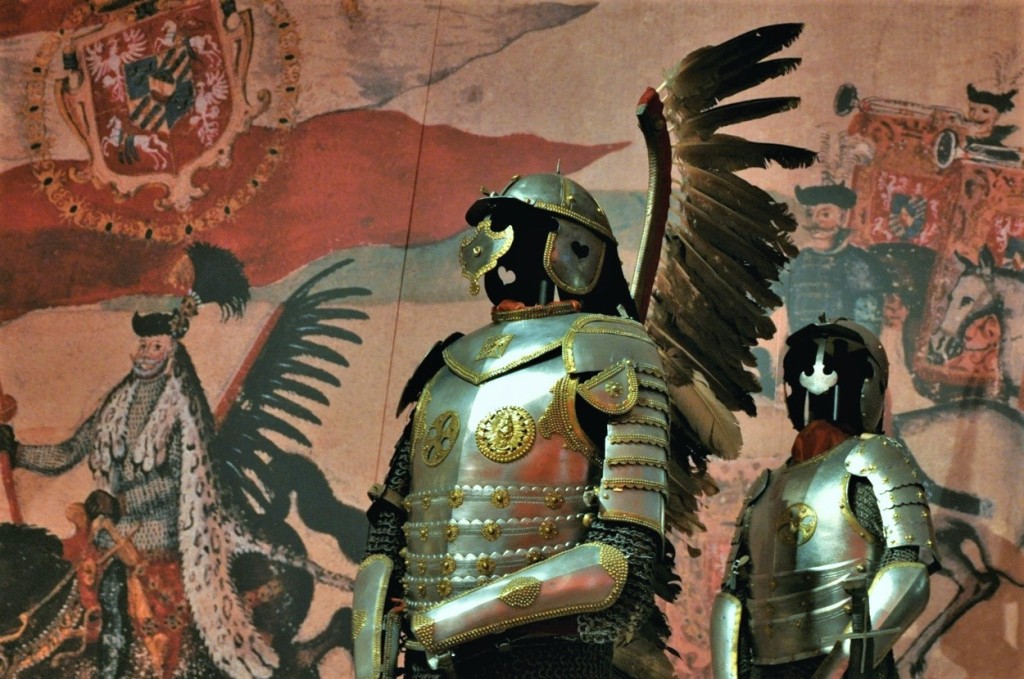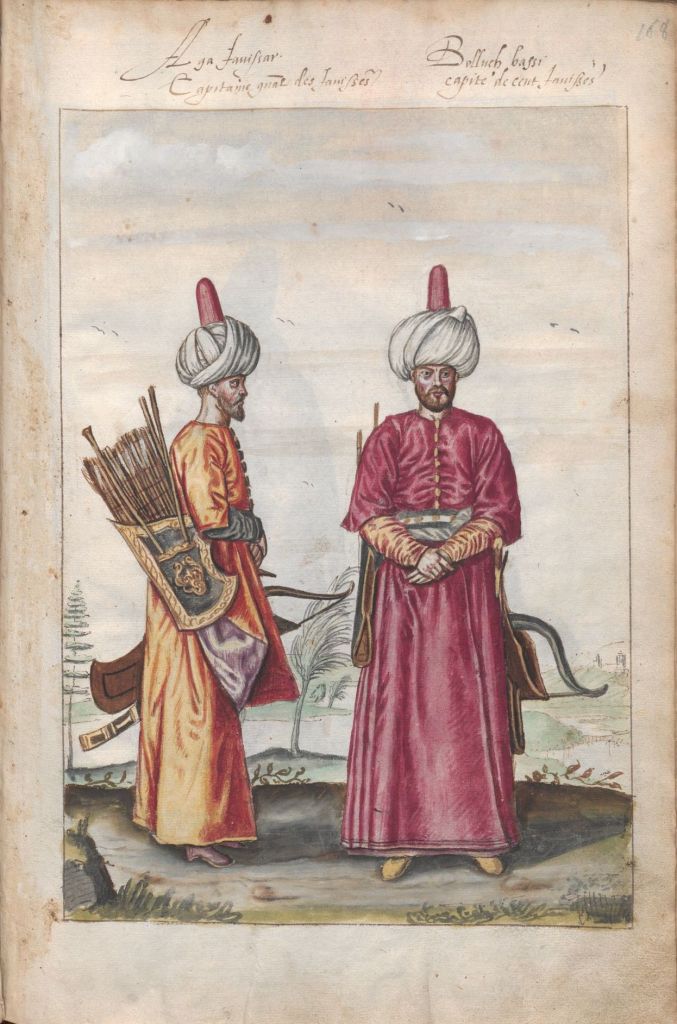I’ve always been drawn to fictional battles, brave fighters, heroic deeds, swords, banners, armors, horses… The Battle of Helm’s Deep from the LOTR trilogy never ceases to give me goosebumps (“Theoden king stands alone.” “Not Alone! Rohirrim! To the king!”), but the silent battle scene in the middle of Kurosawa’s 1985 movie Ran has to be seen to be believed. If you haven’t watched Kurosawa’s astonishing vision of King Lear, I highly recommend it.
I like history, so it doesn’t come as a surprise that the past sometimes finds its way into my books in the form of battles. I found inspiration for one such titbit in the stories of some of the braves warriors in post-medieval Europe – the Polish Winged Hussars and the Janissaries.
In 1621, the Polish-Lithuanian Commonwealth clashed with the invading Ottoman army in Khotyn in Bessarabia, today’s Ukraine. (They’ll meet once more, some fifty years later, on the same battlefield.) Both armies employed their elite units — the Winged Hussars and the Janissaries. The former were light cavalry, the latter infantry, both well-trained and fireless, and perhaps because of that, the battle ended in a stalemate.
At first, the Winged Hussars were forged of the exiled Balkan warriors, who ended up in Poland as mercenaries in early sixteenth century. In the following decades, however, they were transformed into a heavily armored shock cavalry.
The Hussars were famous for their huge “wings”, a wooden frames filled with eagle feathers. The wings made a loud, clattering noise, making the cavalry appear much larger than in reality and frightening the enemy’s horses. The wings also protected the back of the rider from swords.
Interestingly enough, the Janissaries too were recruited from (but not exclusively) the Balkans. Thought devşirme system or “blood tax”, the young, healthy boys were taken from their families and sent to Istanbul to be incorporated into the army or educated for the Ottoman administration. Cruel as it was, this practice produced many great military leaders and high ranking officials, including numerous grand viziers.
Janissaries, the first modern standing army in Europe, were famous for their bravery and loyalty.
My character, Ahmed Demir, fought for the Ottoman army. He wasn’t a janissary; he was a member of Turkish aristocracy. Ahmed was — now you can learn a few Turkish words — a yüzbaşı (captain) as well as a heķim (doctor) — the modern day equivalent to an army physician. He had sihirbaz (wizard) blood in his veins; it would help him to survive Khotyn and, many years later, share his story with us.
Attributions: bazylek100 & Lambert Wyts
P. S.
I have a question.
Do you dislike the WordPress block editor as much as I do?





You always have such fascinating historical details to share. No wonder you use them in your writing. Cheers.
LikeLiked by 1 person
Thank you!
I wanted to study history, but I liked linguistics too. 😊
I’m glad you find those titbits interesting 🌸🦋
LikeLiked by 1 person
I did like the old WP editor better. I could do more things with it. But if I keep the formatting really simple, then the block editor is faster. I just can’t make my posts look cool.
This is the first I’ve heard of wood-n-feather wings on horseback soldiers. Whatever military leader came up with that is pretty clever.
LikeLiked by 1 person
Thank you for the comment!
I guess we’re not getting the classic editor back, so better get used to the new one.
The Winged Hussars in charge must have been a terrifying sight.
LikeLiked by 1 person
Generally I’m not a fan of extended battle or combat scenes in fiction. Visualizing all the moves is tiring; I want to find out how it ends and move on to something more interesting. But LOTR–even more than Helm’s Deep, there’s the Battle of the Pelennor Fields, where Eowyn and Merry beat the Black Riders’ King. And the moment where Eomer is in despair at the sight of the black ships. He accepts eventual defeat, but that turns to rejoicing when he realizes it’s Aragorn and the men of southern Gondor. That is a memorable moment indeed!
I’ve heard of the Janissaries before, but not the Winged Hussars. Interesting!
I’ve figured out how to use the block editor to put posts together. I have a never-to-be-published practice post in my Drafts that I use to test things. I kind of like the colour features and the fact that it’s so easy to move blocks up and down.
LikeLiked by 1 person
“No man can kill me!”
“I am no man!”
Epic!
You’re right, the power is often in details, like when Eowin kills the Witch King, or when Balian of Ibelin knights every man before the battle for Jerusalem.
Thanks for the suggestion! I also have a few old drafts that I can use to try to figure out the block editor.
LikeLiked by 1 person